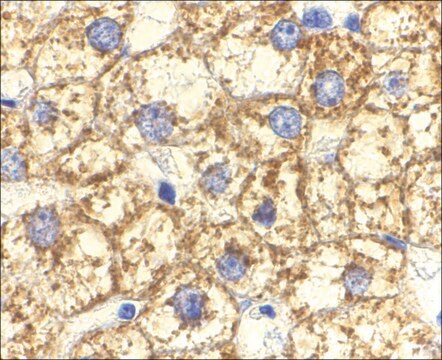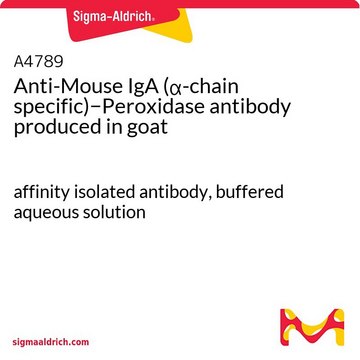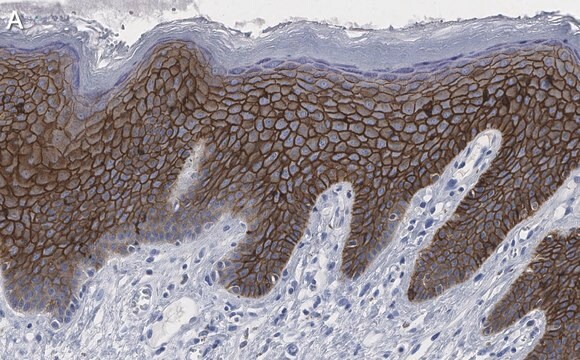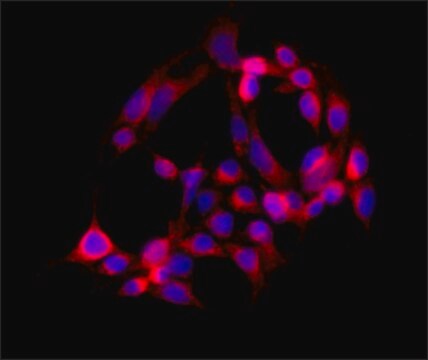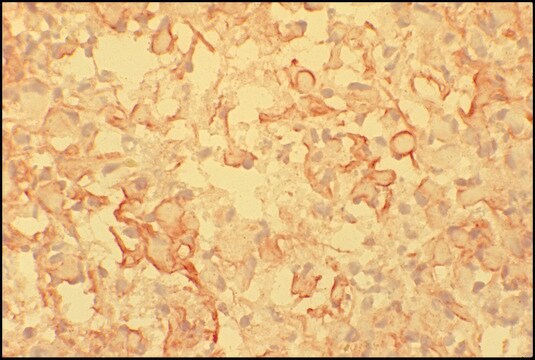SAB4200125
Anti-Notch3 antibody, Rat monoclonal
purified from hybridoma cell culture
Synonyme(s) :
Anti-CADASIL, Anti-CASIL, Monoclonal Anti-Notch3 antibody produced in rat
About This Item
Produits recommandés
Source biologique
rat
Conjugué
unconjugated
Forme d'anticorps
purified from hybridoma cell culture
Type de produit anticorps
primary antibodies
Clone
monoclonal
Forme
buffered aqueous solution
Poids mol.
antigen ~270 kDa
Espèces réactives
rat, human
Conditionnement
antibody small pack of 25 μL
Technique(s)
western blot: 2-4 μg/mL using using Jurkat cell extracts
Isotype
IgG2a
Numéro d'accès UniProt
Conditions d'expédition
dry ice
Température de stockage
−20°C
Modification post-traductionnelle de la cible
unmodified
Informations sur le gène
human ... NOTCH3(4854)
rat ... Notch3(56761)
Description générale
Members of the Notch gene family encode transmembrane receptors. Mammals have four Notch receptors, Notch1 through Notch4. Notch1 and Notch2 have the highest homology with each other, whereas Notch3 and Notch4 are structurally divergent, lacking the transactivation domain that is found in Notch1 and Notch2. The Notch3 receptor possesses 34 extracellular epidermal growth factor (EGF)-like repeats and three cysteine-rich Notch/LIN12 repeats (LIN). It also contains two protein-protein interaction domains, the RAM domain (R), two nuclear localization signals (NLS), six ankyrin (ANK) repeats and a PEST sequence (P) at its cytoplasmic portion. The NOTCH3 gene is mapped to human chromosome 19p13.12.
Spécificité
Immunogène
Application
Actions biochimiques/physiologiques
Forme physique
Stockage et stabilité
Clause de non-responsabilité
Vous ne trouvez pas le bon produit ?
Essayez notre Outil de sélection de produits.
Code de la classe de stockage
10 - Combustible liquids
Point d'éclair (°F)
Not applicable
Point d'éclair (°C)
Not applicable
Certificats d'analyse (COA)
Recherchez un Certificats d'analyse (COA) en saisissant le numéro de lot du produit. Les numéros de lot figurent sur l'étiquette du produit après les mots "Lot" ou "Batch".
Déjà en possession de ce produit ?
Retrouvez la documentation relative aux produits que vous avez récemment achetés dans la Bibliothèque de documents.
Notre équipe de scientifiques dispose d'une expérience dans tous les secteurs de la recherche, notamment en sciences de la vie, science des matériaux, synthèse chimique, chromatographie, analyse et dans de nombreux autres domaines..
Contacter notre Service technique


